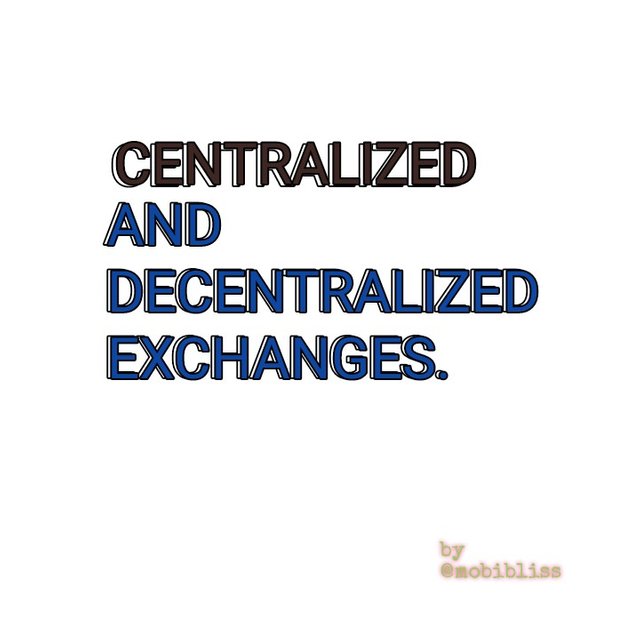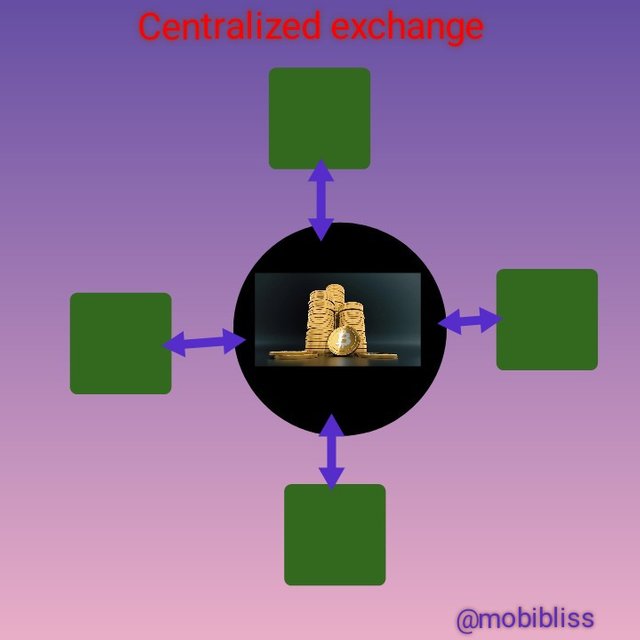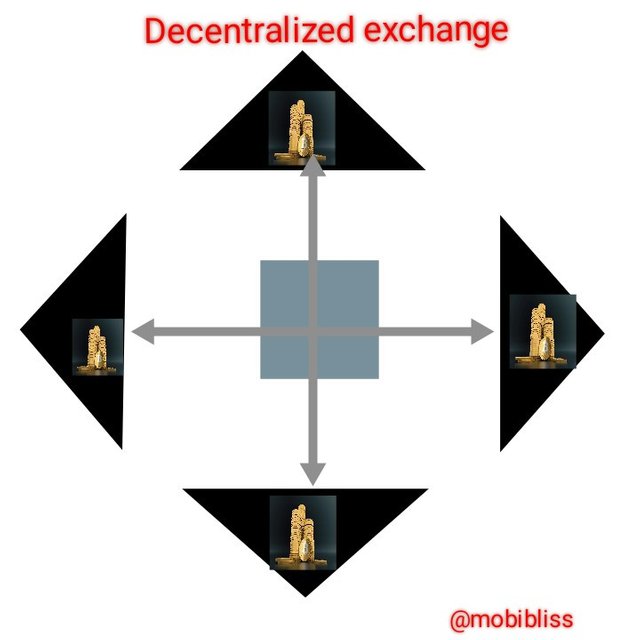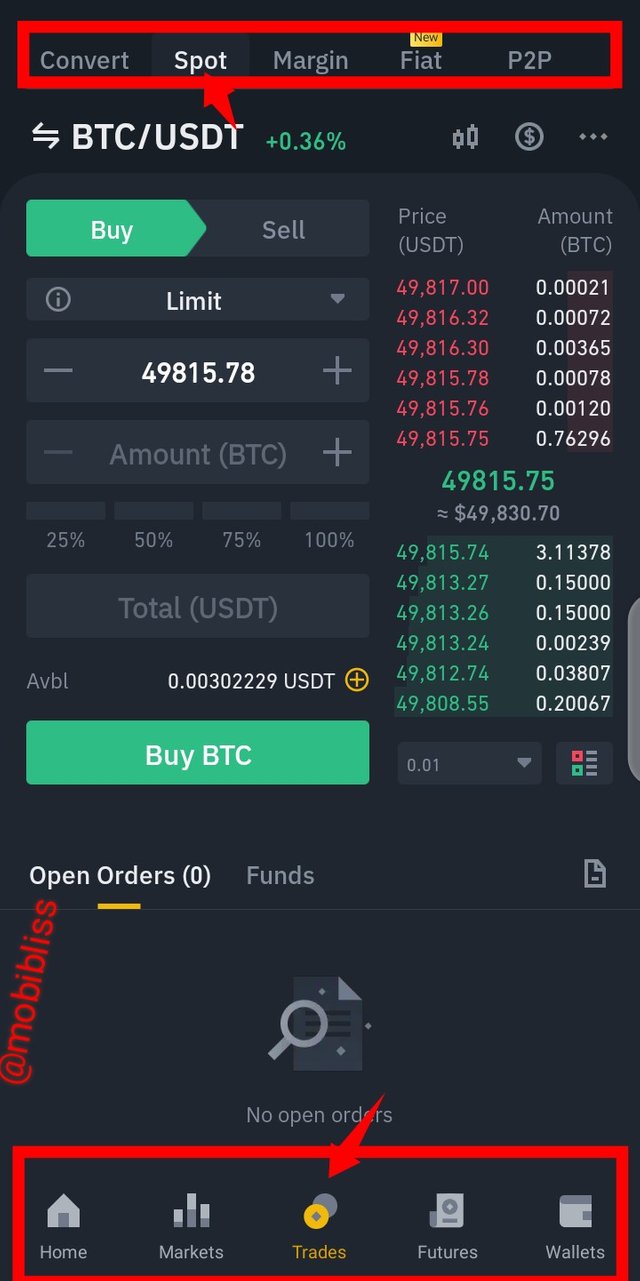
Explain in your own words what an Exchange is. Differences between a Wallet and an Exchange. Mention the advantages and disadvantages of DEX and CEX. Have you used an Exchange before? tell us about your experience._
task 5, question category 3

WHAT IS AN EXCHANGE.
In cryptocurrency world, we have exchange platforms and wallet platforms. Exchange platforms are platforms that offer trading services, allowing a users to swap a coin with another coin or sell a coin in exchange for fiat money. Exchange platforms also offer provisions for staking activities. Users can stake their coins on the platform and make return on investments.
Staking is comparable to fixed deposits in banks. In fixed deposits users lock up their money for agreed period of time and in return they are paid interest based on the number of period and proportional to the amount deposited. In the same way, staking means one locking his coin away for a certain agreed period. By locking away his coin, a user provides liquidity to the platform and in return receives interest for the investment.
Crypto exchanges performs most of the functions done by traditional financial institutions like banks. For example, some exchanges perform lending services, stake and exchange.
TYPES OF EXCHANGES.
Exchanges may be categorized based on how it operates. Some exchanges work just like normal traditional exchange markets: they are centralized. Others however are Dapps running on Blockchains: they are decentralized.
1: CENTRALIZED EXCHANGE.
Centralized crypto exchange platforms are exchange platforms with control over the activities of individuals in the platform. They serve as mediators between the buyer and seller and make commission from both. These platforms are regulated by appropriate authorities. To participate in centralized exchange platforms, one need do know-your-customer (kyc) verification.
Fig 1. Centralized exchange.

Example of centralized exchange platforms includes Coinbase, Binance etc.
2: DECENTRALIZED EXCHANGE.
Decentralized exchanges run as decentralized applications on Blockchain. Unlike centralized exchange platforms, decentralized platforms has no central control. They perform all the functions of the centralized exchange platform through AMM. (Automated market maker). Users do not need there personal details to participate. Transactions are peer2peer.
Fig 2. Decentralized exchange.

Examples of Decentralized exchange platforms. includes, Uniswap, Sushiswap etc.

WALLETS.
Wallet platforms are simply platforms to store crypto. The confusion some may have between wallet and exchange platforms is that both have wallets in them. For example, in binance or Coinbase, we see wallets, although they are exchange platforms. The difference is that wallets on exchanges are meant to serve us temporarily, whereas wallets on wallet platforms are like our safes.
Take for example, John want to trade his Bitcoin to buy steem. He has $30 worth of BTC in his trust wallet. He need to move that BTC worth to his BTC wallet on binance so as to swap his BTC to steem. Once the transaction is completed, he could choose to move the steem back to his steem wallet on trust wallet.
With wallet platforms, you can store your coin, transfer it to other addresses and make withdrawals.
We can also link our wallets with exchange platforms, and withdraw and store funds from exchange platforms to our wallet platforms.
Examples of wallets includes, trust wallet, token pocket, Jax wallet, exodus, electrum. etc.
TYPES OF WALLETS.
We can categorize wallets based on how it stores coins.
SOFTWARE WALLET.
These wallets are called hot wallets because they are connected to the internet.
Most are wallet applications that can be downloaded on mobile devices, desktop computers or are surfed directly through web browser.
- Crypto wallets on mobile devices are known as mobile wallets. It runs as an app that can be downloaded to the mobile phone. Trust wallet, token pocket,etc fall on this category.
- Wallets having a software that can be installed on a desktop computer or laptop are known as desktop wallets. Electrum is an example of such.
- Wallets without an app that can be accessed by surfing directly online is known as web wallets
HARDWARE WALLETS.
These are called cold wallets. They are wallets that are not connected to the internet but an individual's wallet accounts are stored away on hardwares like flash drive.

DIFFERENCES BETWEEN WALLET AND AN EXCHANGE.

From above made points, it is easy to identify differences between wallet platforms and exchange platforms.
Wallet platforms are primarily used to store coin. They serve as safes to our cryptocurrencies. We can make a transfer from one wallet to another with wallets, we can send and receive cryptocurrencies.
On the other hand, exchange platforms, is where we can do exchanges, like swapping our coin with another coin, performing trading activities, buying low and selling high, staking our cryptocurrencies to add liquidity to exchange platform and get interest.
| Wallets | Exchanges |
|---|---|
| Serves as safes | used for trading |
| Crypto can be stored offline | always online |
| Wallets recommended for for permanent storage | for temporary Storage |
| Cannot perform staking | can perform staking |
| Do not have native token | may have a native token |

ADVANTAGES AND DISADVANTAGES OF DEX AND CEX.

ADVANTAGES OF DECENTRALIZED EXCHANGE (DEX).
1• Free from third party control.
The very benefit of DEX is it's freedom from third parties. Users can transact directly with one another without intermediary. It is equally free from governmental policies.
2• You are in full control of your assets.
Dex platforms do not save your private keys, so you are in full control.
3• Anonymity. Because there are no kyc, users can transact without personal details being made available but only public keys.
4• low transaction cost. When compared with CEX, DEX is lower in transaction cost.
DISADVANTAGES OF DEX.
1• Takes longer time to complete transaction. The scalability and speed of completing transactions remains an issue when compare with CEX. Although some exchanges use proof of Stake consensus mechanism which is faster than proof of work, yet transactions must be validated by miners.
2• Liquidity. Decentralized exchanges are relatively new concept and therefore is met with lower liquidity.
3• Most DEX are not too user friendly. The interface may appear somehow confusing for new traders.
4• Some DEX has limited functionality
For example, margin trades, limit orders, stop losses may not be available, although these can be worked on, it is yet an issue with some traders.
ADVANTAGES OF CENTRALIZED EXCHANGE.
1• Varieties of cryptocurrencies to trade on.
CEX exchange platforms has much varieties of crypto currencies listed on it. Users has wider range of options.
2• User friendly interface the interface is quite easy to understand and suitable for newbies. Interactions within the platform is easy too.
3• It is faster to complete transactions most exchanges can complete transactions faster within seconds.
4•. High liquidity. With higher trading volume, you are confident that the platform will pay you.
DISADVANTAGES OF CEX.
One of the disadvantages of CEX is the use of personal data for verification. These data are made available to governmental authorities according to their requirements to checkmate money laundering activities.
Another issue facing CEX is that user's wallets are part and parcel of the exchange platform. Therefore there could be a problem suppose the platform is compromised.
CEX platforms are under regulators and they could influence the decisions of the platform.

HAVE YOU USED AN EXCHANGE BEFORE? TELL US YOUR EXPERIENCE.

I have used binance exchange to make transactions.
One thing I admired is the ease of use. Making transaction from personal bank account to binance was quite easy. All I needed to do was to use my credit card to fund my local currency wallet created in binance. With the funded money, I can buy usdt or BTC and then swap it with any coin of choice or I can buy the coin directly.
The very feature I enjoyed the most was sport trading. You can swap coin within minutes. And buy desired coin of choice. Exchange back to usdt or BTC as the case maybe.
Fig.3 binance features.

When desiring to withdraw, you will first withdraw back to the local currency. Then move the fund to your bank card.

CONCLUSION.
Exchange platforms and wallets are often confused, but there are differences. Wallets are used as safes while exchanges serve as trading platforms. Wallets on exchanges are encouraged to be used temporarily while we can permanently save our cryptocurrencies on wallets.
There are centralized exchanges like binance and Coinbase. There are also decentralized exchange platforms like Sushiswap and Uniswap.
There are pros and cons for both DEX and CEX.
Thank you everyone for reading through.
Hi @mobibliss, Thank you for taking interest in the 5th Task of the Beginners Fixed Class. Your grades are as follows:
My Review and Suggestions:
You have completed the task well.
You structure your article writing very well.
There are some grammatical errors, please pay attention to grammar before posting.
Leave a space between each discussion for easy reading.
Vary headers and sub-headers to make them look more attractive.
No need to mention professors who are not related to the assignments you make.
Thank you!
Downvoting a post can decrease pending rewards and make it less visible. Common reasons:
Submit